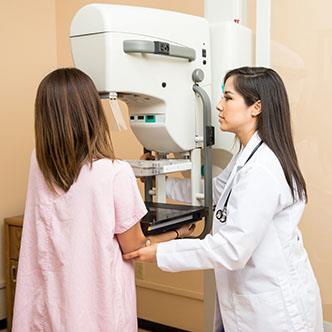
Mammograms aren’t just for cancer screening, based on a recent study that found that calcification in the breasts’ arteries may be an early sign of heart disease—the No. 1 killer of women in the United States.
Published in JACC: Cardiovascular Imaging, this study looked at the link between calcification in the breast and in the heart’s arteries. Coronary artery calcification, often referred to as CAC, is the build-up of calcium in the heart’s arteries. It’s well known that patients with CAC are at higher risk for life-threatening heart events. However, whether calcification in other parts of the body—like the breasts—may also be a warning sign for heart disease is less clear.
To learn more, researchers designed the Bone, Breast and Coronary Artery Disease study, which was conducted at the Seoul National University Bundang Hospital in North Korea between 2011 and 2013. The study included 2,100 healthy middle-aged women who underwent three exams including a mammography, bone density scan and an imaging test to detect calcification and plaque in the heart’s arteries.
After the study, researchers then compared results to see if there was any link between the three tests.
Overall, researchers found that 11% of women had calcium build-up and 15% had plaque build-up in the heart’s main arteries—a known warning sign for heart disease. When compared with other tests, researchers found that women with calcium and plaque build-up were roughly three times as likely to have calcification in the breasts and twice as likely to have low bone mass compared to those with normal scans.
Perhaps most importantly, researchers also found that including breast calcification in calculations helped better predict future cardiovascular risk than those that included coronary artery calcification and plaque alone.
Standard predictions use well-known risk factors like age, race, and high cholesterol to estimate individuals risk for developing heart disease in the next ten years. However, this study suggests that adding two non-cardiac tests may help better identify women at increased risk for heart disease.
According to authors, these findings add to a growing body of evidence about the potential of mammograms and bone density scans in screening for heart disease. Past studies suggest these two tests can help identify patients at increased risk for heart disease. Authors believe that measuring bone density and calcification in the breasts’ arteries could help identify women who show no symptoms of heart disease but are at increased risk.
Researchers also add that findings are particularly promising, as these tests are already being performed on most women and require no additional radiation.